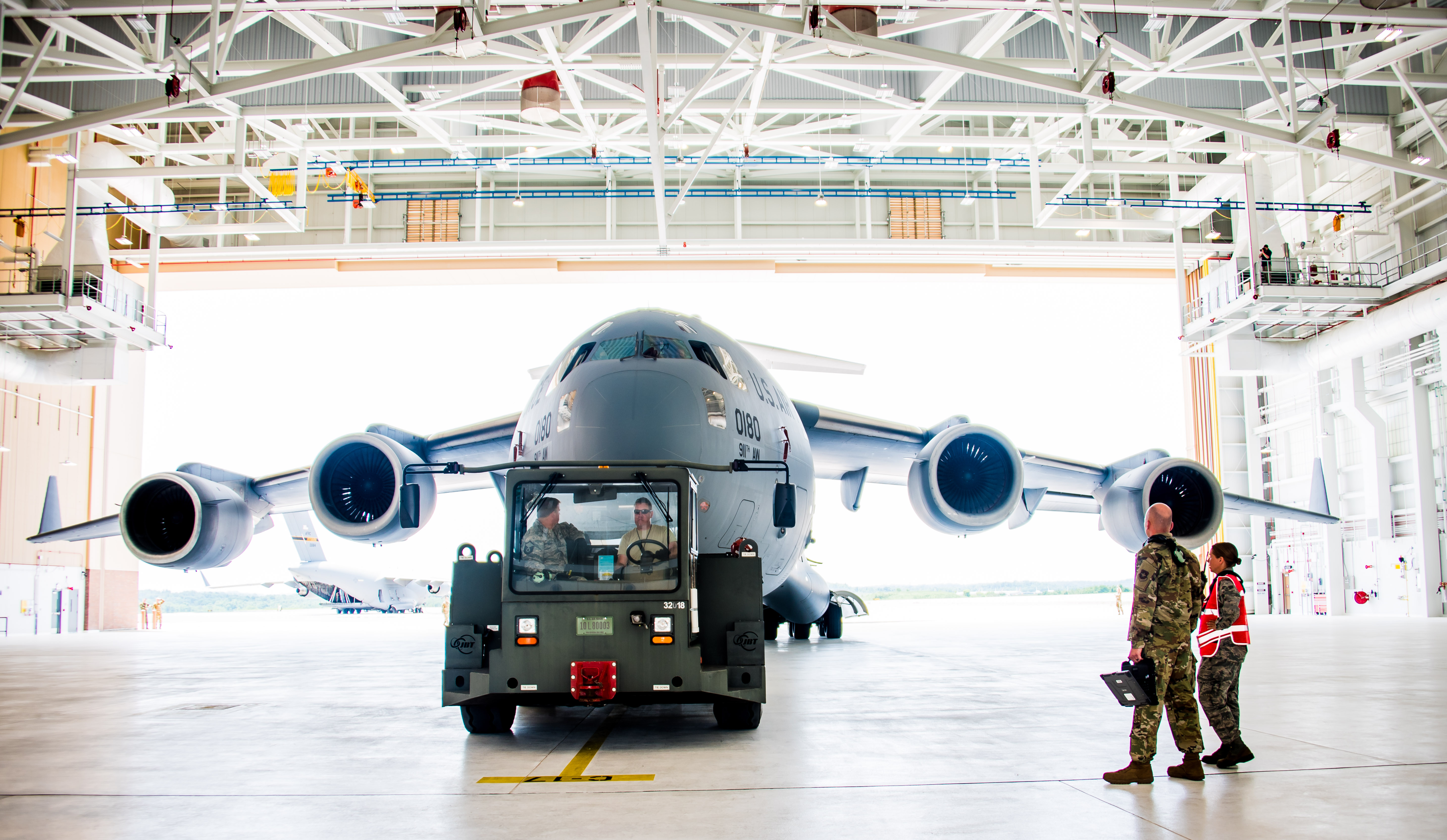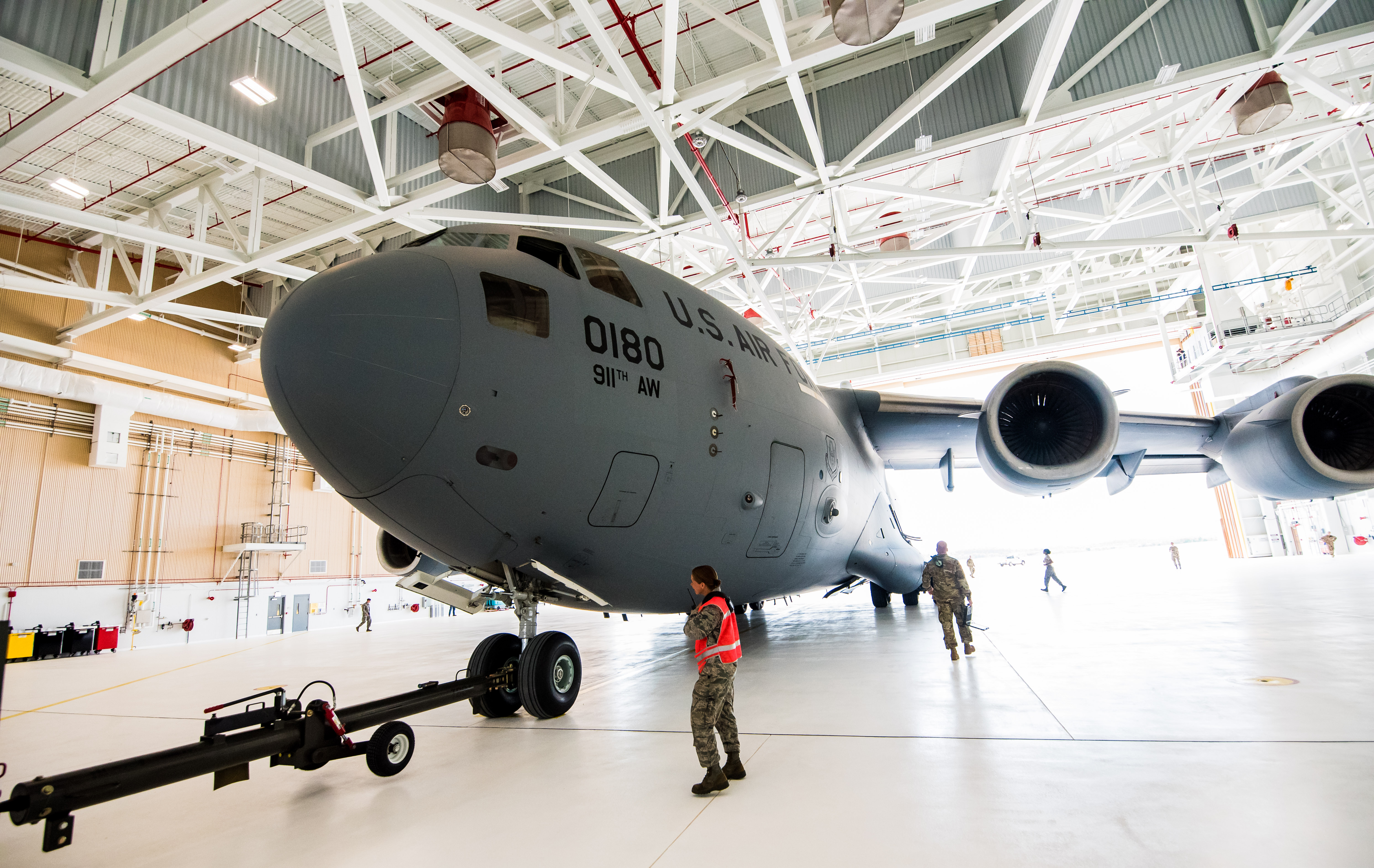Solution
In order to provide the necessary accommodations, the scope of the project was developed to include a 115,500-square-foot two-bay hangar for corrosion control and fuel cell maintenance of the C-17 aircraft. Burns & McDonnell was hired to provide design and construction phase services including master planning, site surveys, interior design, cost estimates and on-site inspections.
The corrosion control bay section of the hangar was designed and built to offer an environmentally controlled area to wash aircraft, provide corrosion treatment and repair, and perform aircraft maintenance painting as needed.
The fuel system bay portion of the hangar contains vapor exhaust and breathing air supply equipment to support on-aircraft inspections and repairs as well as a fuel cell wing pressurization system. Like the corrosion control bay, aircraft in the fuel system bay are positioned in a nose-in configuration with tug pull‑through access.
The last third of the new hangar, which is over 28,000 square feet, houses maintenance shops, administrative areas, showers and lockers, equipment and engine storage space and paint rooms.


